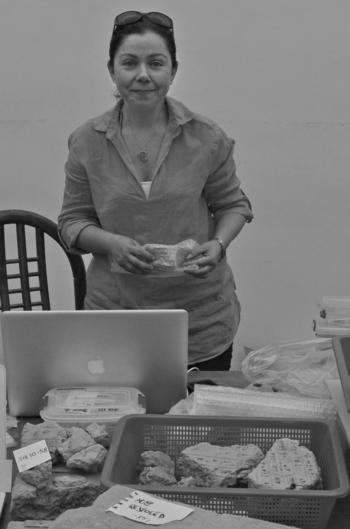Cinzia Pappi "Infrastructural Developments in Early Empires"
"Infrastructural Developments in Early Empires"
Das Projekt „Infrastructural Developments in Early Empires” verfolgt das Ziel einer Neubetrachtung des Begriff der „Infrastruktur“ in der historischen Narrative des Alten Orients, um ihre Entstehung und ökonomische und politische Rolle in der Entwicklung innerhalb der assyrischen Provinzen und in Beziehung zu den Nachbarstaaten zu präzisieren. Archäologische Befunde und Keilschriftsquellen liefern Evidenzen für den langfristigen Ausbau eines Netzwerks von materiellen (z. B. Kommunikationsnetzwerke, Lagereinrichtungen, Bewässerungssysteme, Produktionszentren und Verteidigungssysteme), sowie immateriellen Einrichtungen (wie z. B. Staatsverwaltung, Recht und Technologien). Solche Infrastrukturen stellen eine konkrete Form der politischen Hegemonie Assyriens dar, die in allen Provinzen zum Ausdruck kommen, sich aber unterschiedlich nach der Natur der Grenzgebiete entwickeln und diverse Formen von kulturellen Landschaften innerhalb der breiten Peripherie Assyriens generieren. Als Modell soll untersucht werden, wie solche Einrichtungen zur Begünstigung der Kommunikationswege und zur wirtschaftlichen Ausnutzung der Provinzen des Ost-Tigris Gebiets beitragen und eine territoriale Hegemonie ermöglichen.
The project on "Infrastructural Developments in Early Empires" aims to a re-consideration of the term “infrastructure” in the narrative of the ancient near eastern studies, establishing a clear typological description, and questioning their political impact on limited peripheral areas of the periphery of the Assyrian Empire (e.g. the Transtigrine and the Upper Tigris regions). The creation of a network of material and non-material facilities, including political institutions, communication networks, storage facilities, irrigation systems, centers of production, and defensive systems, demarked the presence of central power and facilitated routes of communication. The development of such infrastructures within the imperial core lands and peripheries denotes the grade of hegemonic control.
The research, combining both archaeological and epigraphic primary sources, will first provide a tool to be used in historical and archaeological narratives, and, further insights into our understanding of the built landscape of Middle and Neo-Assyrian Periphery of the Transtigrine region.




